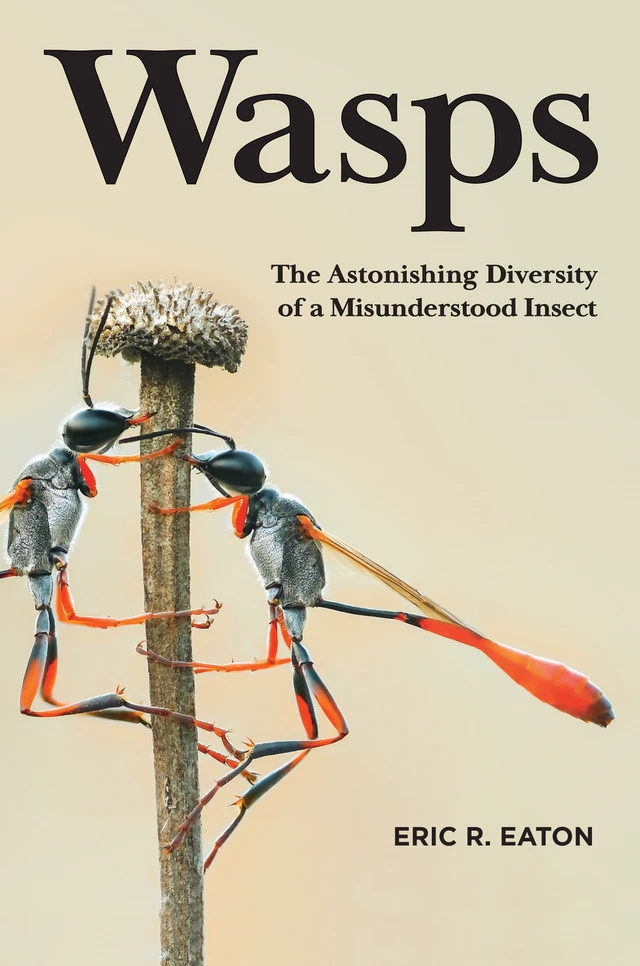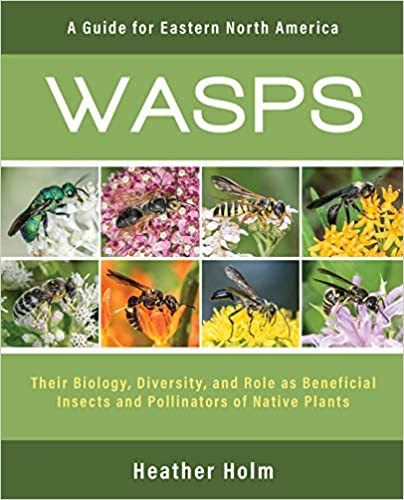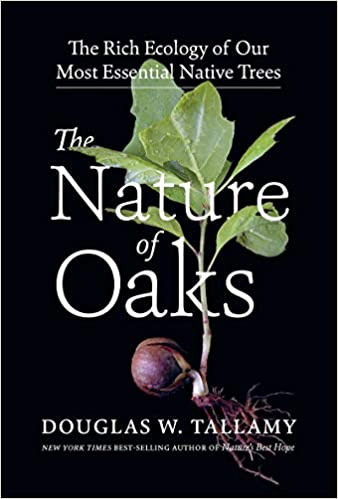Backyard Books for 2021
Did you know? Maryland is home to over 1,200 species of wasps! Not all of those species are aggressive like yellowjackets and hornets, and even the aggressive species have their place in our landscapes.
 Unfortunately, easily accessible information on wasps is still hard to find, so I was thrilled to see two books come out this winter that are dedicated to wasps. In addition, Dr. Doug Tallamy has recently published a book on oaks.
Unfortunately, easily accessible information on wasps is still hard to find, so I was thrilled to see two books come out this winter that are dedicated to wasps. In addition, Dr. Doug Tallamy has recently published a book on oaks.
Wasps: The Astonishing Diversity of a Misunderstood Insect
Eric R. Eaton
If you have ever wanted to know why we should love wasps, then check out Eric Eaton’s newest book on wasps. Eric has co-authored books such as the Kaufman Field Guide to Insects of North America, and this book is his first written as a sole author.
If you have followed Eric Eaton through his blogs such as Bug Eric, then you may be familiar with his easy to digest and fun writing style which is prevalent in this new book on wasps. This fact-packed book dives into the many benefits of wasps and the fascinating ecology and evolution of these misunderstood species.
 Wasps: Their Biology, Diversity, and Role as Beneficial Insects and Pollinators of Native Plants
Wasps: Their Biology, Diversity, and Role as Beneficial Insects and Pollinators of Native Plants
Heather Holm
I have been a fan of Dr. Holm’s work for quite some time and was thrilled to see her publish her newest book on wasps this past winter.
In contrast to Eric Eaton’s book on wasps, this book focuses more on specific groups and species of wasps found on in eastern North America. Much of the guide is devoted to providing accounts on the ecology of different wasps such as where they nest, what they eat, their behaviors, and other fun facts. The last few pages of the book also detail plants that help support certain wasps and planting guides for different regions in the eastern United States. Attracting wasps is a great way to attract your own natural pest control!
 The Nature of Oaks: The Rich Ecology of Our Most Essential Native Trees
The Nature of Oaks: The Rich Ecology of Our Most Essential Native Trees
Douglas W. Tallamy
Dr. Doug Tallamy has captivated audiences since his first book: Bringing Nature Home. His work focuses on the importance of plant-insect interactions with a particular focus on Lepidoptera (butterflies and moths). Recently, some of his research has focused on keystone species, species on which other species in an ecosystem largely depend.
Oaks are a keystone group of plants that support numerous wildlife in the landscape. Dr. Tallamy’s book on The Nature of Oaks takes a dive into the wonderful world of interrelationships that are sustained by oaks. This book is an excellent resource for those interested in adding or enhancing landscapes with oaks. It is also a great resource for naturalists and those interested in learning more about the relationship between plants and wildlife.
Happy Spring HabiChat fans!
After what seems like the longest winter, I am happy to see signs of spring popping up in my local landscape. The queen bumblebees have emerged from their winter slumber. The ruby-throated hummingbirds are beginning to migrate back to Maryland. The trees are all starting to leaf out. So much is happening right now!
One big event slated for Maryland this year is the emergence of Brood X, the 17 year periodical cicadas. Learn more about these fascinating critters, what to expect, and their benefits with this season’s article on cicadas.
Spring is also a great time to add native plants to your garden! This edition of Habichat features golden ragwort, a native perennial which lights up gardens with a pop of yellow this time of year. Check out the Maryland Native Plant Society website for a list of local nurseries that supply native plants. This time of year is also a great one to tackle some of the invasive plants that may have found their way into your yard. Check out the Plant Invaders of Mid-Atlantic Natural Areas for information on common invaders and how to properly remove them.
This edition of HabiChat also includes an article on how to make your backyard owl friendly as well as a few new backyard books for 2021 and small blurbs on young wildlife in the garden and the current salmonella outbreak with feeders.
Finally, don’t forget to check out our Wild Acres webinar series. Each month, we feature different topics relating to Maryland’s wildlife and natural resources. In June, we’ll have guest speakers from the University of Maryland Extension and Calvert County to speak on topics such as forest succession and American kestrels.
Happy Habitats,
Kerry Wixted
Click here to have HabiChat—the quarterly backyard wildlife habitat newsletter from the Wild Acres program—delivered right to your inbox!
In this Issue
Native Animal Profile: Brood X Periodical Cicadas
Habitat Tips: Owl-Friendly Backyards
Native Plant Profile: Golden Ragwort
Backyard Blurbs

